-
Paper Information
- Paper Submission
-
Journal Information
- About This Journal
- Editorial Board
- Current Issue
- Archive
- Author Guidelines
- Contact Us
American Journal of Computer Architecture
2016; 3(1): 8-12
doi:10.5923/j.ajca.20160301.02

Migration Strategies while Working with ERP (Enterprise Resource Planning) Packages Like SAP Suite, HANA and S/4 HANA
Mallikarjuna R. Ghattamneni
PSCM (Procurement and Supply Chain Management) Group, Spectra Energy Corp, Houston, USA
Correspondence to: Mallikarjuna R. Ghattamneni, PSCM (Procurement and Supply Chain Management) Group, Spectra Energy Corp, Houston, USA.
| Email: |  |
Copyright © 2016 Scientific & Academic Publishing. All Rights Reserved.
This work is licensed under the Creative Commons Attribution International License (CC BY).
http://creativecommons.org/licenses/by/4.0/

When it comes to migration project, choosing the right approach for any organization can be overwhelming. This comprehensive research document not only leads through project planning, but also gives the strategies and instructions for executing the complex project plans while implementing SAP ERP, moving to the cloud, migrating to SAP S/4HANA, or replacing a legacy system. This isn't an absolute rule and Greenfield customers should definitely go directly onto Suite on HANA, but customers with a complex SAP landscape should not go live with Suite as their first system. Why? The challenge is, if BW would soon run on HANA, which means NetWeaver ran on HANA which further meant they could easily run the Suite. As everyone know, not sure why SAP chose not to also announce Suite on HANA support. SAP’s comment was that if a large customer's BW system were to go down, they would open a support ticket and get it resolved. If their ECC system went down and they stopped the manufacturing facility, he would get a phone call from a CIO. Some organizations may elect not to migrate but rather opt for a “greenfield” installation that simply requires data migration from the old system into a completely new SAP HANA environment. However, for the majority, a “brownfield” migration is the likely path, moving from existing systems, upgrading and reusing existing system elements selectively. At this stage, we assess the current SAP system and the steps required, including whether to maintain existing databases or move to a new version. Taking a phased approach makes it possible to manage the migration costs in line with planned budgets and timetables. Ten strategies were recommended based on the quantitative approach of new ERP implementation.
Keywords: SAP, ERP, S/4 HANA, Cloud, On-Premise, Fiori, Mobile applications, Internet, APIs, TM, SRM, EWM, TCO and CRM
Cite this paper: Mallikarjuna R. Ghattamneni, Migration Strategies while Working with ERP (Enterprise Resource Planning) Packages Like SAP Suite, HANA and S/4 HANA, American Journal of Computer Architecture, Vol. 3 No. 1, 2016, pp. 8-12. doi: 10.5923/j.ajca.20160301.02.
1. Introduction
- Whilst HANA is an incredibly stable database and ECC runs very well on it, HANA will be a new database to the organization and it is best to start with a system which is not transactional in its nature. It is always recommend doing BW on HANA first - it allows the training of staff, implementation of infrastructure, backup, high availability and disaster recovery, monitoring processes etc. Once BW is in, the organization will have the maturity to support HANA, and ergo the maturity to migrate Suite.If getting live on Suite is a priority then organizations can run parallel projects, going live with BW first, and with Suite 4-8 weeks later (which is idle). Implementing BW on HANA first is just a better way to build organizational process intelligence around HANA. If the company doesn’t have BW then just need to be a little more structured around how to build that capability. Things to consider includes (but not limited to) architecture, sizing, networks, updates, backup/restore and monitoring. There are processes like support and incident management, change management, release management and transport management and people-centric items like support personnel and DBAs. Just the same as any other system.
2. 10 Strategies Recommanded
- Below are the recommended strategies (categorized into 10) in order to be succeeded in any major ERP implementations.1. Build an Integrated Schedule2. Build mid-level and detailed plans3. Have a communications plan and stakeholder map4. Have a production-sized sandbox/pilot5. Consider having some skin in the game from SAP6. Join the Customer Advisory Council7. Change Many, Test Once8. Adopt Solution Manager 9. Test, test and test!10. Build an integrated cutover plan1. Build an Integrated Schedule with Optimized System ArchitectureThis is important for any project, but with Suite on HANA it is essential. In any streamlined organization, there will be connected systems like Supply Chain Management, forecasting systems like BPC, reporting systems like BW, third party interfaces and integration. There will be a raft of front end tools like SAP GUI (Graphical User Interface), Portals, Web Stores. Cloud integration to SuccessFactors or Ariba or Salesforce.This involves a huge integration part with teams from Basis, Systems Architecture, Infrastructure, Networking, Custom Development, Test Management, Finance, HCM and others. Suite touches the whole business. Better to build always an integrated schedule with an optimized systems landscape (fig-1) that describes the project that can be displayed on a single monitor screen, so everyone can understand what is happening and how it is happening.
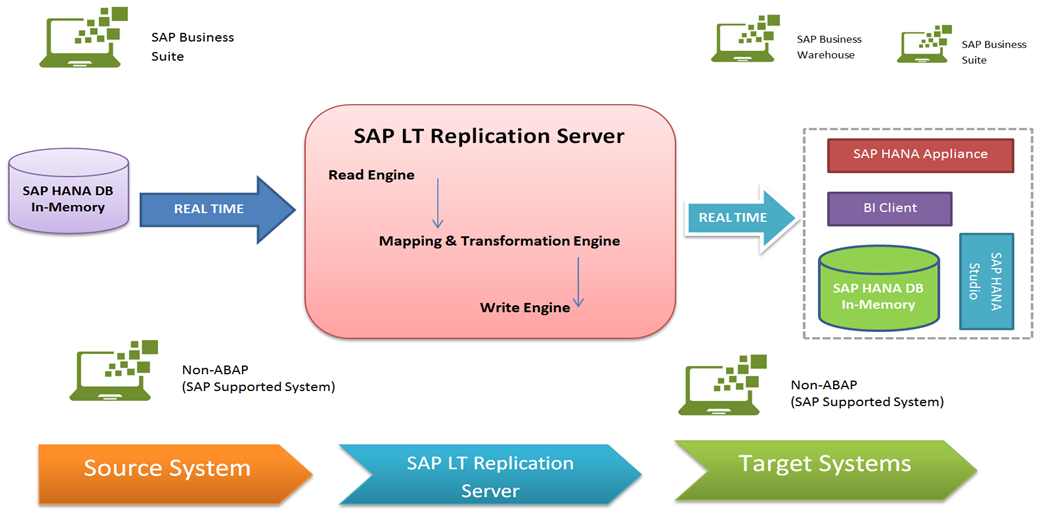 | Figure 1. Real-time systems (Integrated SAP and non-SAP systems) along with DB |
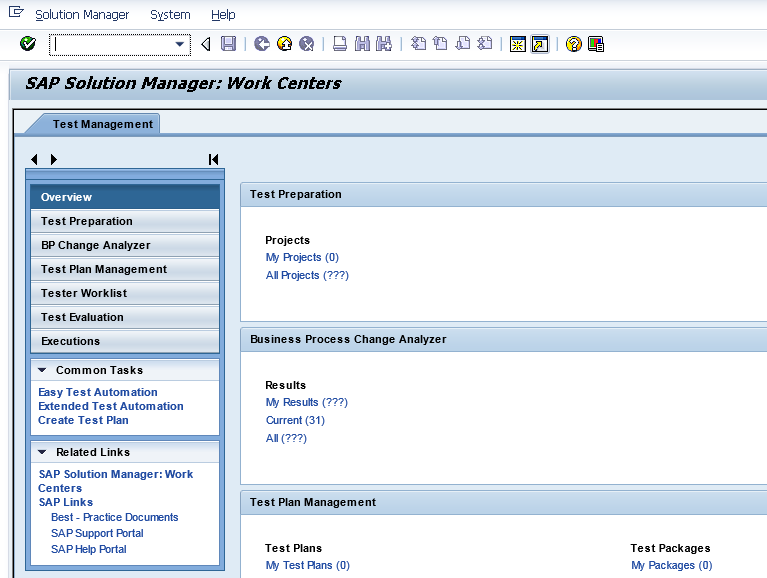 | Figure 2. Solution Manager (SolMan) user interface (UX) |
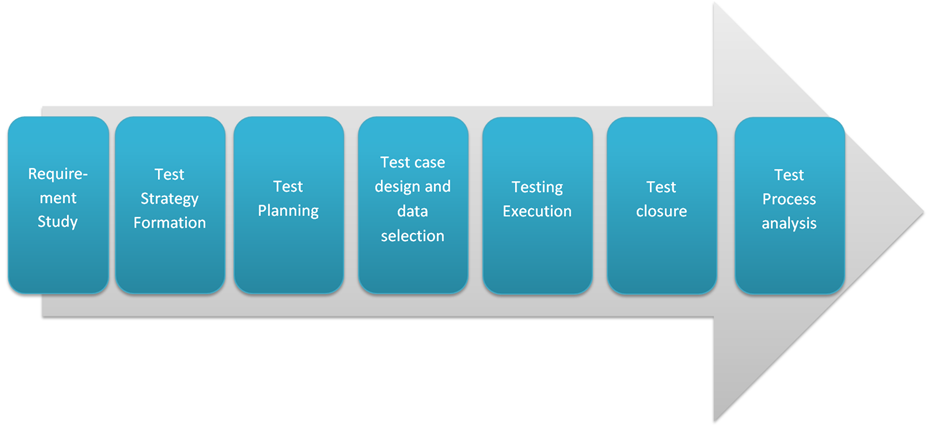 | Figure 3. Test plan for a successful integration/migration project |
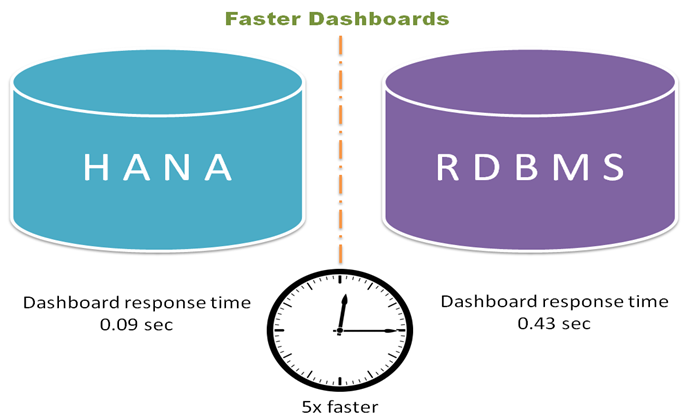 | Figure 4. HANA Vs regular RDBMS |
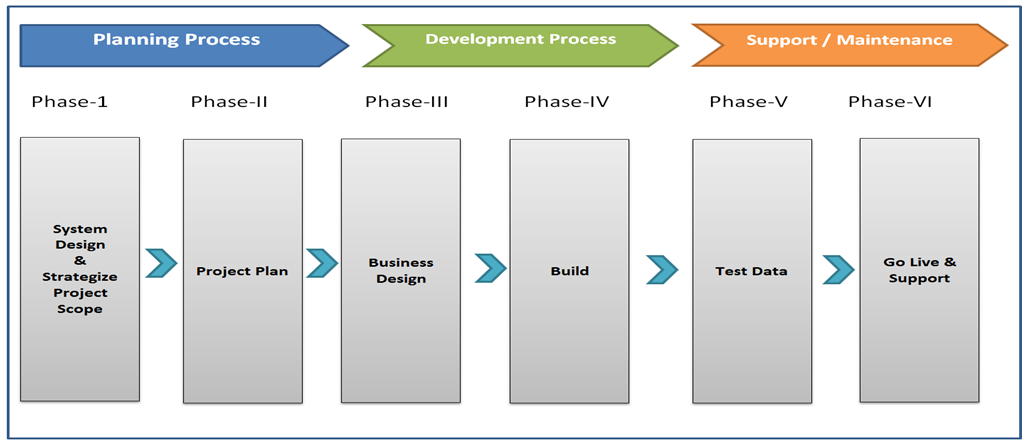 | Figure 5. Project scope and plan |
3. Conclusions
- Our experience so far exhibits that HANA is a phenomenal alternative than the exemplary database and has enormous potential not pretty much as a database. Late experience grabbed between the movement task being executed now for one of our customer’s shows that running the ERP framework on the HANA stage passes on significant execution points of interest after relocation, and further streamlining can duplicate them. Based on the 10-point strategies discussed, every project should come up with and follow these in order to achieve better results.1. Build an Integrated Schedule2. Build mid-level and detailed plans3. Have a communications plan and stakeholder map4. Have a production-sized sandbox/pilot5. Consider having some skin in the game from SAP6. Join the Customer Advisory Council7. Change Many, Test Once8. Adopt Solution Manager 9. Test, test and test!10. Build an integrated cutover plan
ACKNOWLEDGMENTS
- This case study was supported by Maria LeBeau (Director, Supply Chain Management, Spectra Energy Corporation) and Christopher Collins (Manager, ERP Legacy Systems, PSCM – Procurement and Supply Chain Management, Spectra Energy Corporation, headquarters, Houston, TX). We thank our colleagues from Spectra Energy Corporation who provided insight and expertise that greatly assisted the research, with their willingness to support all of the interpretations/conclusions of this paper.Author would also like to show gratitude to the Phillip Dunn (Manager, Compliance and SOX), Jim Ischy (Manager, MDM technologies, Spectra Energy Corporation) and Irfan Ahmed (Manager, Business Process Improvements and Implementation, Spectra Energy Corporation) for sharing their pearls of wisdom with us during the course of this case study, and we thank the reviewers Veloz Rene (Reporting Data Expert, Spectra Energy Corporation) for their so-called insights. We are also immensely grateful to Antti-Jussi Pohjonen (Manager, Supply Chain Management, Spectra Energy Corporation) for his comments on an earlier version of the manuscript.
 Abstract
Abstract Reference
Reference Full-Text PDF
Full-Text PDF Full-text HTML
Full-text HTML